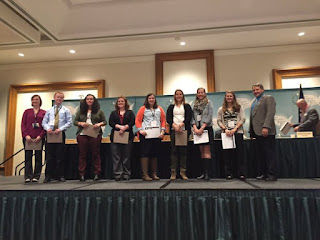 Dear First Year Teacher Ms. Andrews,
Dear First Year Teacher Ms. Andrews,This blog is going to be your refresher and empowerment to continue striving to be the best teacher you can be. Classroom management is going to be challenging, but I am going to remind you of best practices to ensure your classroom is managed well.
Let's first review why classroom management is important. Classroom management is directly related to student retention. If a classroom atmosphere is not conducive for all students, learning will not occur. You have to remember to be intentional, sneaky, and strategic. As the Methods books tell us, "Only you can prevent student behavior"!
Effective Teaching
If students are engaged, they will not be thinking about misbehaving. How are you being interesting? What are your hooks? Giving clear directions and instructions is one powerful BEVCO practice to implement. While giving instructions, if students are frustrated or do not know what is going on then they are off-task and more problems are likely to occur. In addition, knowing your content will prevent misbehavior. From a student perspective, they will see confidence and will not question your ability or knowledge. As a teacher, if you know the content then you will be able to be focussed on your students and their behaviors.
I know this is easier said then done and will be better the more time you have in the classroom but planning for effectiveness and studying your content will allow you to better manage your class! As you learned in Fall of 2015, you cannot ever be over prepared!
Promote Acceptable Behavior
Now these are guidelines you read from your Methods text and are general. Keep in mind that each class, each year will be different, and you will have to adapt to that.
1. Start out firm (You can always ease up, but it does not work the opposite way)
2. Be prepared to teach well (See above)
3. Have a definite routine by which each class is scheduled (Conditioning)
4. Effective incorporate praise (not to often, but reinforce positive behavior)
5. Do not have favorites
6. Separate the action from the person of the student (State the wrong behavior, not the entire student)
7. Never discipline a student when angry
8. Set a good example (Do not be hypocritical between students as well as between co-workers)
9. Forgive and forget (do not hold grudges because everyone is human)
10. Be attentive (Students will take advantage of a teacher who can only manage one student at a time)
Set-Expectations Early
The first day of class is the essential time to set your classrooms expectations, consequences, and procedures. The power of this is to set the standard, be transparent as possible, and them hold your students to the standard set. Make sure all lingering questions are addressed about expectations and if necessary make sure parents understand your expectations.
Non-Verbal Management
Let's talk about how to teach and management the classroom all at the same time. Here are a few ideas:
1. Facial Expressions
2. Silence
3. Body Language
Examples: stand by students desks who are talking, put up an index finger to say "wait", and flick the lights or do not say anything to get the classes attention
Resources
Judge your classroom noise control (Application): Noise Meter
Class Management Tips (Article): Education World
And if none of the above helps there is always...
Keep working hard because you are making a difference,
Ms. Andrews, Preservice Teacher

















